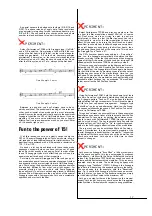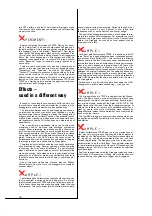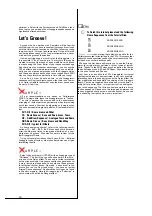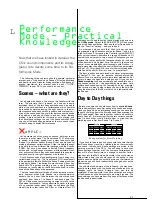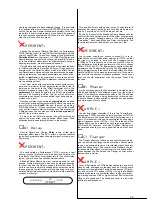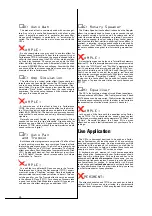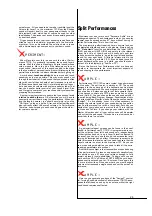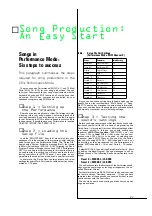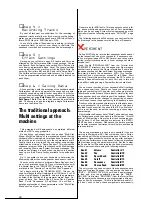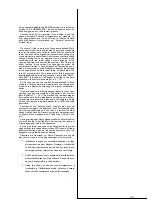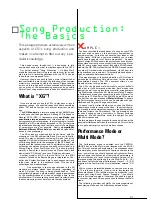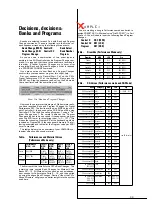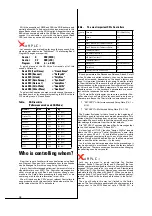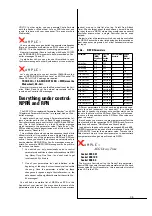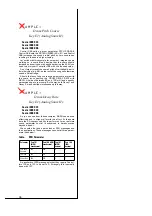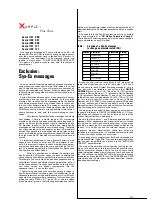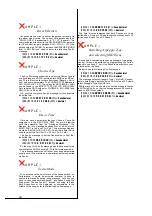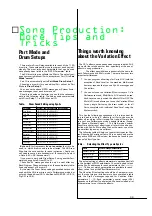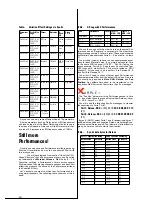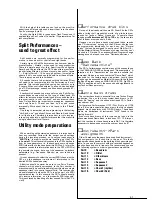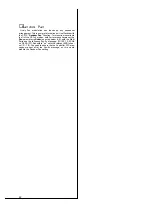
27
Song Prod uction:
An Easy S tart
✇
Songs in
Performance Mode:
Six steps to success
This paragraph summarises the steps
required for song productions in the
CS1x Performance Mode.
You may choose a Performance (MIDI Ch. 1) and 12 Multi
Parts (MIDI Ch. 5-16) for your song productions. You can
tailor your Performance to your song‘s requirements with the
keyboard‘s Knobs and EDIT functions, all of which can then
be stored. Multi Parts however are controlled by your
sequencer program using MIDI Events.
❯
Step 1 = Setting up
the Performance
Search out an inspiring Preset or User-Performance to play
a leading role in your song creation. Customise the sound to
your requirements. If you are planning to use the Arpeggia-
tor, set its tempo to MIDI to allow its speed to synchronise to
the sequencer. If possible, save your Performance in location
USER 001 (STORE, 001, ENTER, YES).
❯
Step 2 = Loading the
Setup File
Load file “SETUPPF.MID” from the Tutorial disk into your
sequencer. This file contains all the important initial settings
used for songs in the Performance Mode. This “Setup File”
begins with a System Exclusive message (Bar 1) that resets
the Multi Part settings (MIDI Ch. 5-16). Following is a Bank/
Program Change message that calls up USER Performance
001. If you saved your Performance to this location there is
no need to alter this setting. You will not need to use the fol-
lowing controllers for MIDI Channel 1 very often, as any
parameters they control can also be set in your Performance.
Furthermore, the Setup Data contains events and initial
settings for every Multi-Part (see the table below), each sep-
arated by 1/16 gaps.
Table:
Setup File Part Settings
(Performance Mode, MIDI Channel 5)
As you can see, these settings are the same ones you can
usually find in other synthesizer‘s “Multi Setup” or “Song
Multi”. The setup bar precedes the actual song information.
You can of course alter all these settings in your sequencer‘s
edit mode to create your own initial song settings.
❯
Step 3 = Testing the
sound’s settings
Before you begin recording your first few tracks you should
familiarise yourself with the process of programming the
Setup Data. Try for yourself just how different settings affect
your sound aurally. To this end you should enable your
sequencer‘s MIDI Thru function (“MIDI THRU = on”) and
set your CS1x to Local Off in Utility mode. You can now
choose which CS1x Part is to be used by selecting your
sequencer track‘s MIDI Channel. You can play the Perfor-
mance by choosing MIDI Ch. 1. MIDI channels 2 to 4 don‘t
do anything as they are reserved for the Performance‘s 4
Layers. MIDI channels 5 – 16 control Parts 5 – 16 respec-
tively.
Select MIDI Ch. 5, then edit the Setup Data for Part 5. Start
by editing the Bank/Program Change messages to call up
different sounds. The following Banks are particularly inter-
esting:
Preset 0 = MSB 063 / LSB 000
Preset 4 = MSB 063 / LSB 004
These Banks contain the first Layer of the Performance and
often provide useful sounds for song arrangement, the so-
called "Material Voices".
Furthermore there are 480 XG-Voices to choose from (see
the table in section “Decisions, decisions…”). Once you have
sampled a few of these sounds you can modify them to your
hearts content with the Controllers.
You should by now have a pretty good idea how song set-
tings are achieved.
Event
Parameter
Initial Setting
Control #00
Bank Select (MSB)
63
Control #32
Bank Number (LSB)
0
Program
Program Change
1
Control# 7
Volume
100
Control# 10
Pan
64
Control# 71
Resonance
64
Control# 72
AEG Release Time
64
Control# 73
AEG Attack Time
64
Control# 74
Cutoff Frequency
64
Control# 91
Reverb Send
0
Control# 93
Chorus Send
0





